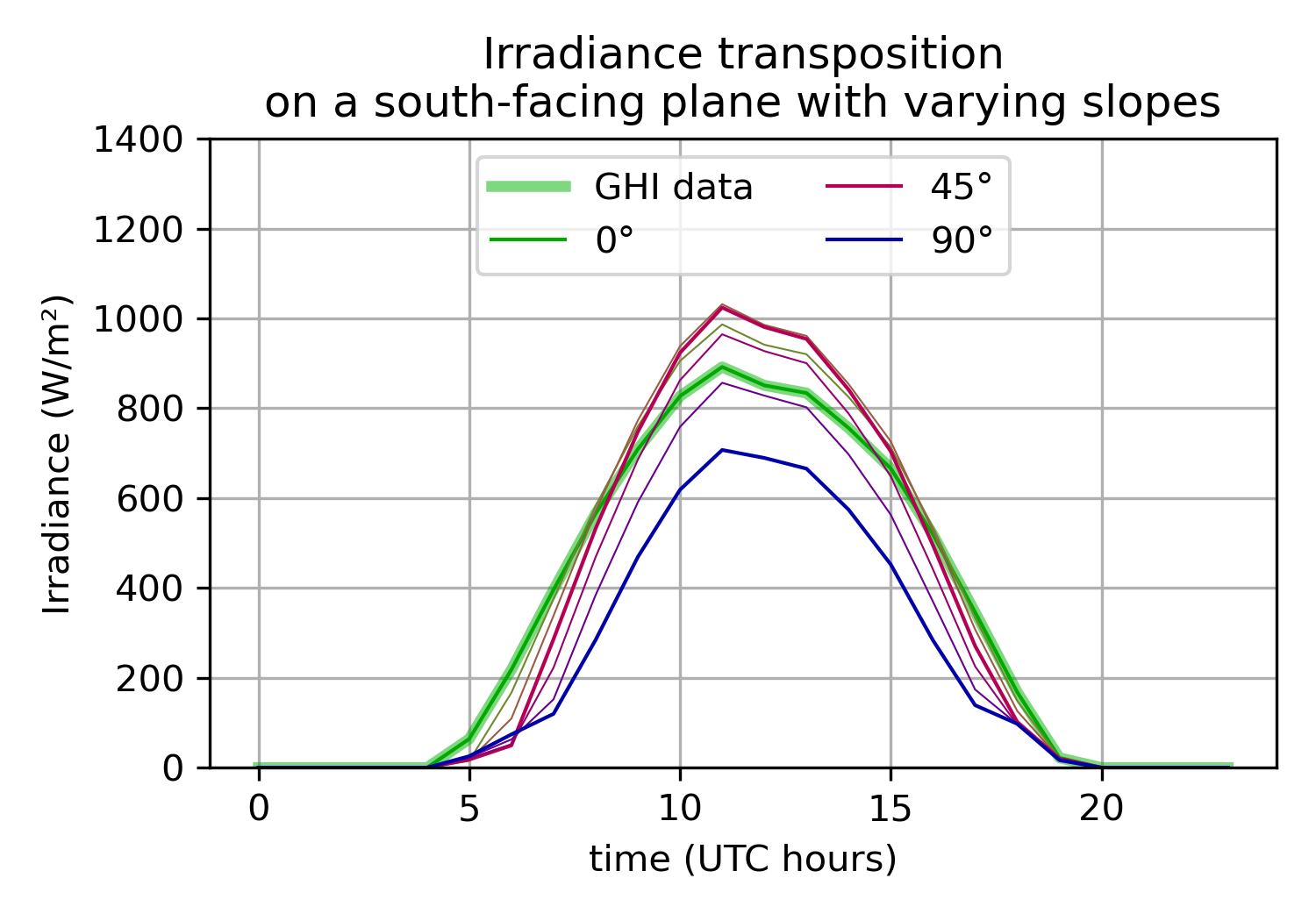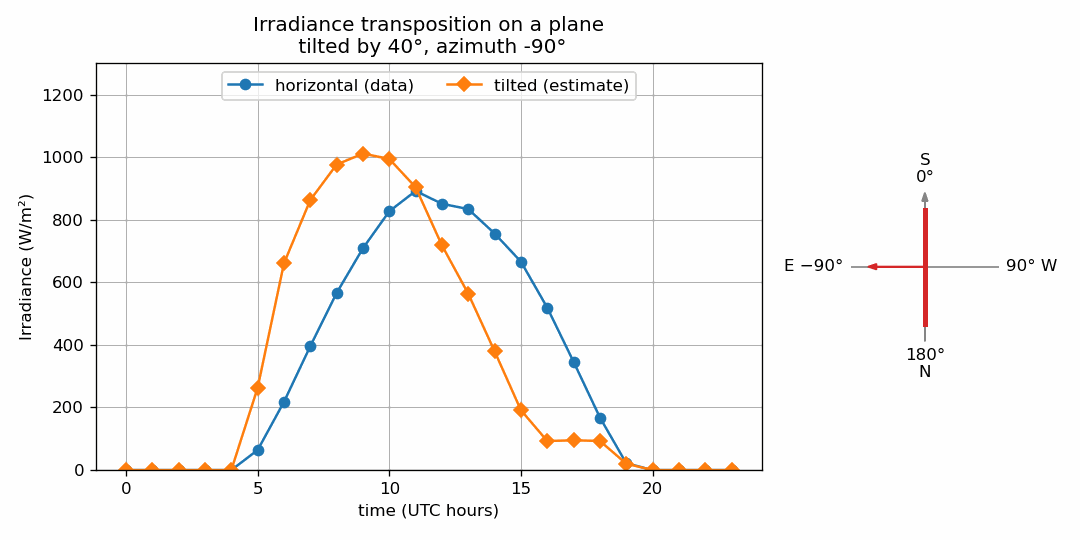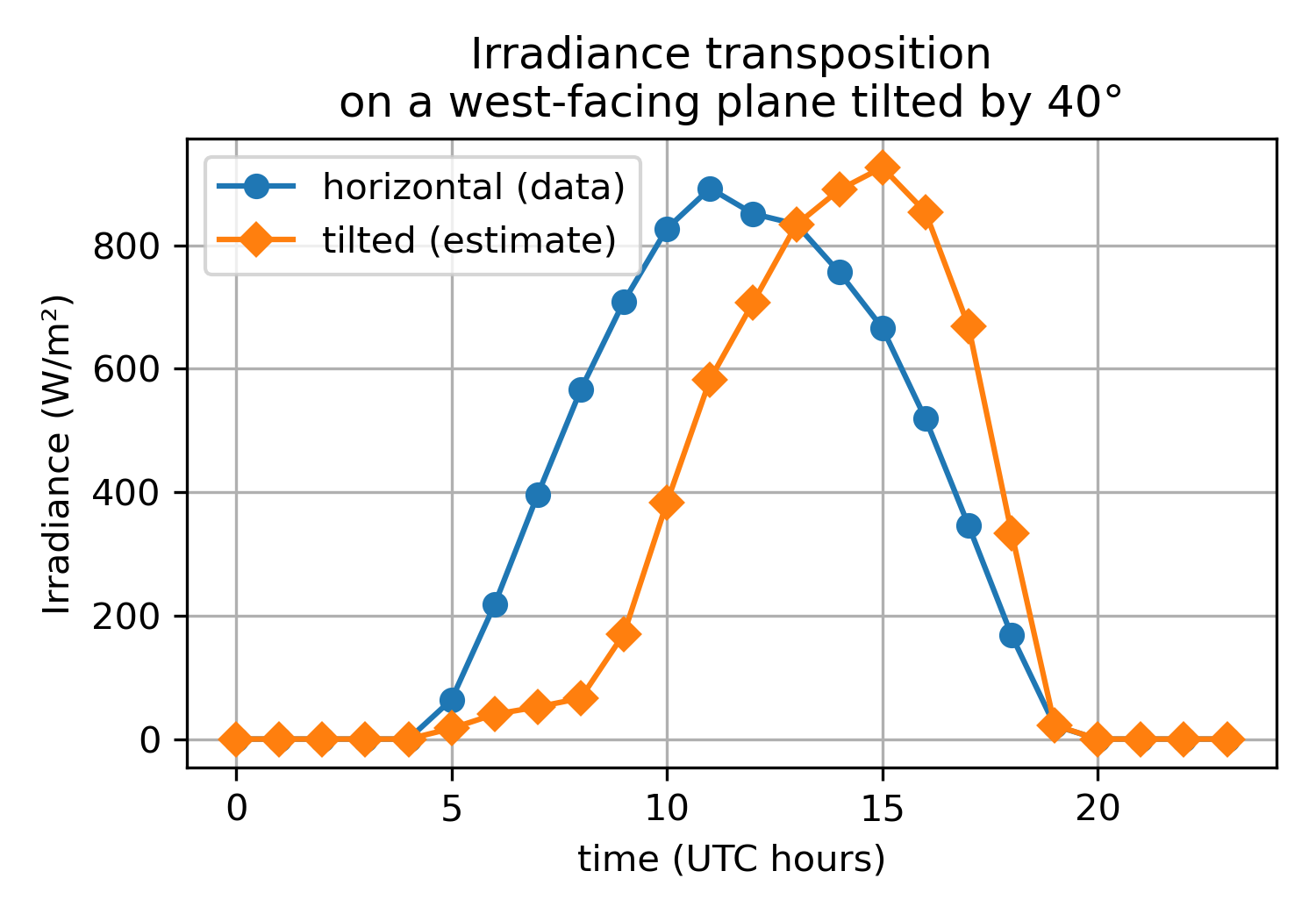The SolarIrradiance Julia package implements computations about solar radiation on the surface of Earth. Applications include solar energy (solar panels) and building thermal modeling.
In particular, it implements several methods from the literature to transpose global irradiance data measured on an horizontal plane (GHI) to an irradiance on an inclined plane (like a solar panel or the wall of a building).
Authors:
- Pierre Galloo-Beauvais, ENS Rennes
- Pierre Haessig, CentraleSupélec, IETR
This code is made available under a MIT license (see LICENSE.txt).
To install the package, enter the Pkg REPL
(pressing ]) and use the add command with the adress of the repository:
(@v1.6) pkg> add https://github.com/pierre-haessig/SolarIrradiance.jl
Now, it can be used with
julia> using SolarIrradiance
Assuming we have the following vector of Global Horizontal Irradiance (GHI) data:
julia> GHI_day = [0.0, 0.0, 0.0, 0.0, 0.0, 64.0, 218.0, 396.0, 566.0, 709.0, 827.01, 892.01, 851.01, 834.01, 756.01, 666.0, 519.0, 346.0, 168.0, 21.88, 0.0, 0.0, 0.0, 0.0];
We can transform it to an irradiance on an inclined panel with the global_radiation_tilt function.
It requires inputs which specify both the GHI measurement to be transposed, the time and location of this measurement, and finally the orientation of the plane for the transposition. These parameters can be set as:
# Time of the measurement (May 16, 2012)
n = 137 # can be computed with dayofyear(2012, 05, 16)
tc_range = 0:23
dt = 1/60 # 1 minute ~ instantaneous (0.0 is forbidden)
# Location (Rennes, France):
lat = 48.117 #°
lon = -1.678 #°
# Panel orientation:
slope = 40 #°
azimuth = 90 #° → west-facing
albedo = 0.5; # in [0,1]Then, we can transpose each of the 24 values in a loop:
Gplane = zeros(length(tc_range))
for (k, tck) in enumerate(tc_range)
GHIk = GHI_day[k]
Gplane[k] = global_radiation_tilt(GHIk, n, tck, dt, lat, lon, slope, azimuth, albedo)
endThe effect of the west orientation is visible: the panel receives more irradiance in the afternon, but much less irradiance in the morning:
Such a radiation transposition model can be used for example to study the effect of the azimuth and the slope of a solar panel.
Tilting slightly the panel increase cumulated irradiance, but a vertical panel receives less:

East to west azimuth animation:

For a more detailed introduction, see doc/Usage.ipynb.
- add ability to input to
global_radiation_tiltthe split beam & diffuse irradiance components instead of the GHI - implement Muneer 1990 transposition method (e.g. used by PVGIS)
- fix case when
D<=0inday_bounds(n, slope, azimuth, lat)(e.g. north-oriented panel)

